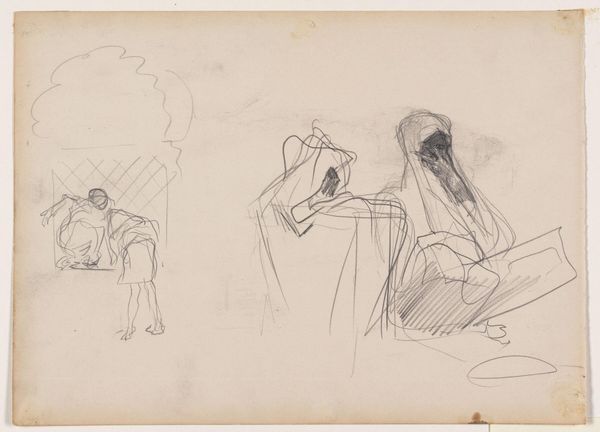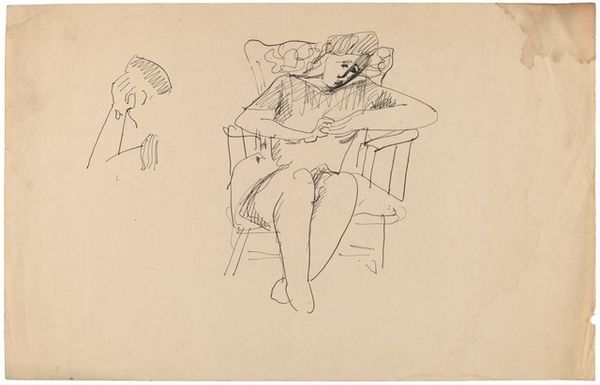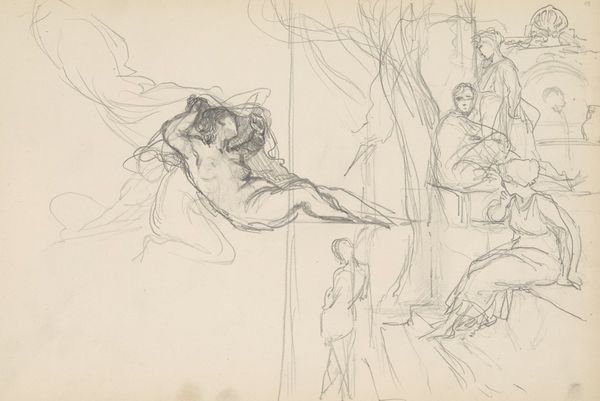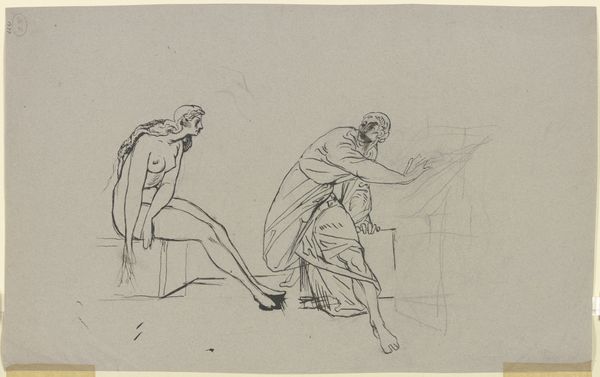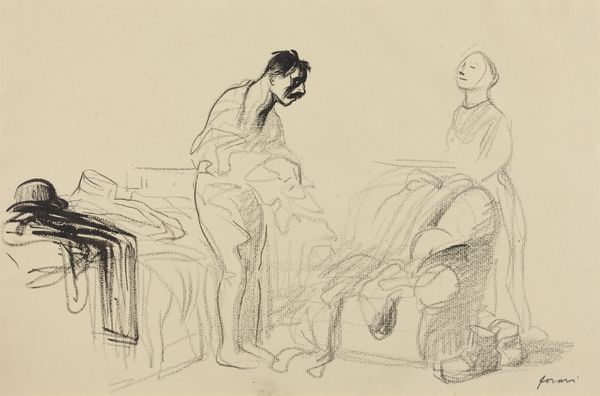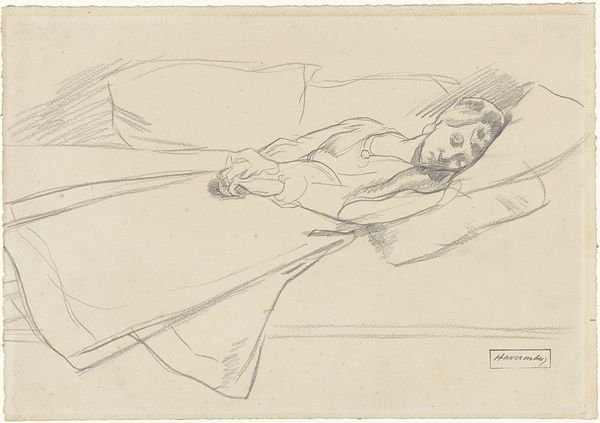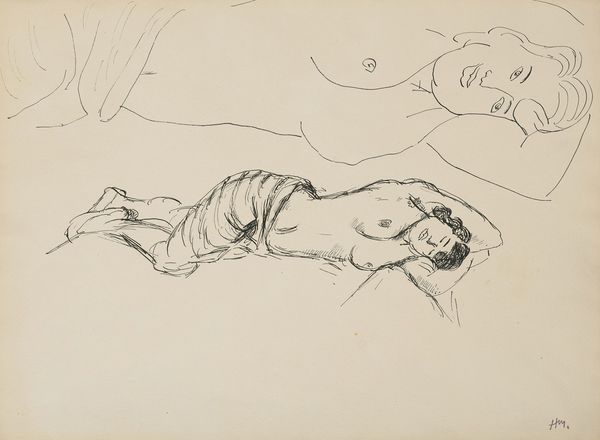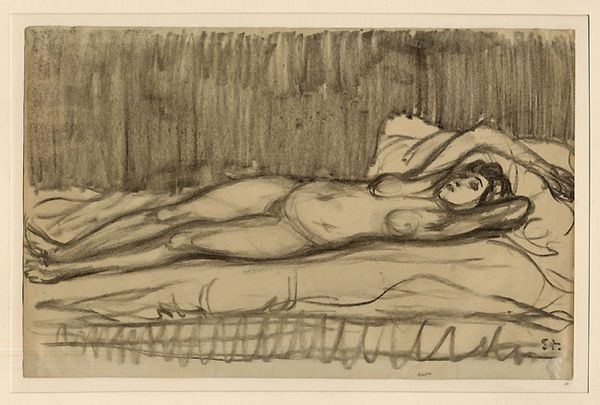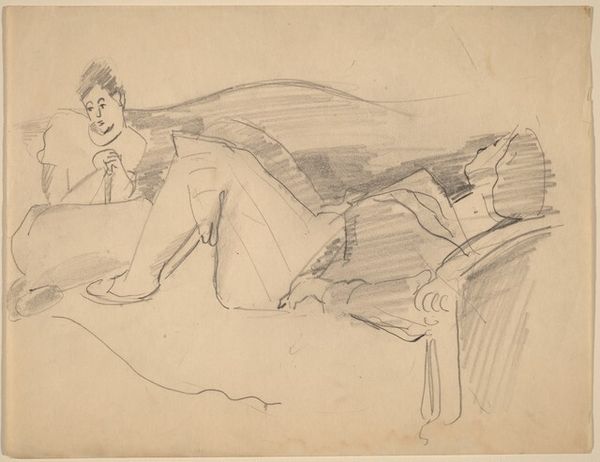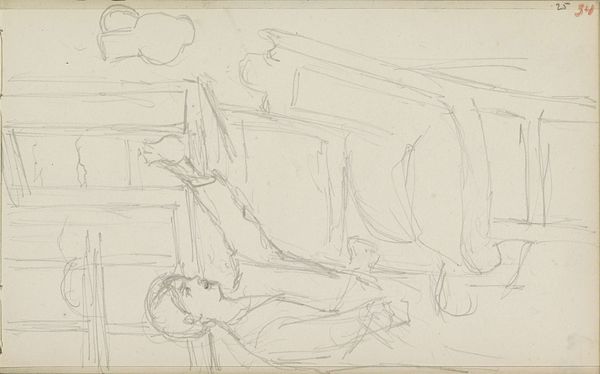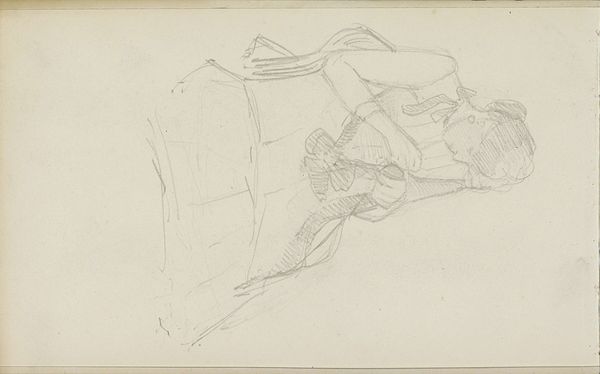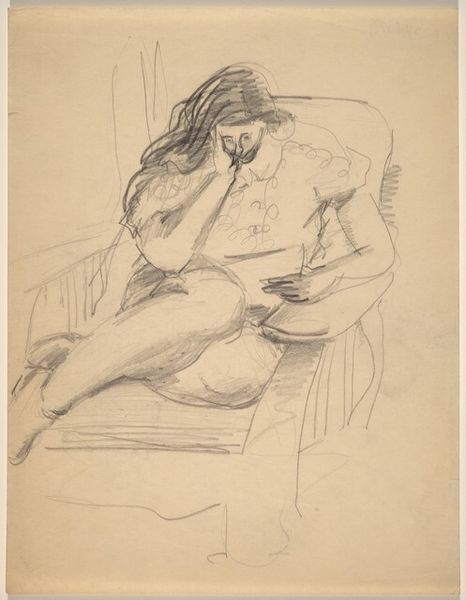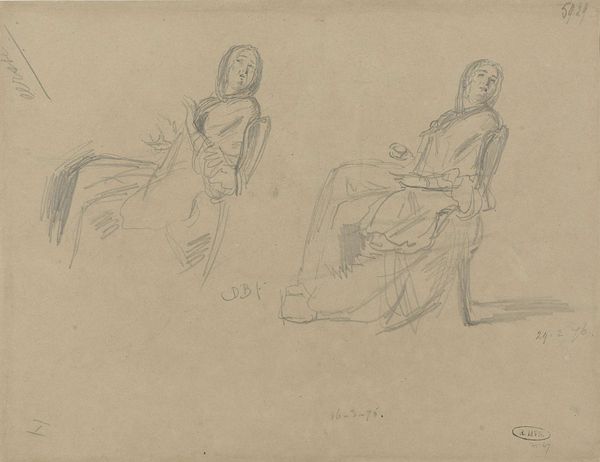
print, etching
# print
#
etching
#
landscape
#
figuration
#
expressionism
#
symbolism
#
nude
Dimensions: plate: 9 3/4 x 13 3/4 in. (24.8 x 35 cm) sheet: 34.8 x 43.5 cm (13 11/16 x 17 1/8 in.)
Copyright: National Gallery of Art: CC0 1.0
This unsettling etching, by Edvard Munch, presents us with a constellation of symbols, each a fragment of a deeper psychological drama. At the center, a nude woman reclines, seemingly oblivious to the torment surrounding her. Above, a man contorts himself beneath a spiked yoke—a potent image of self-inflicted suffering. This motif of voluntary pain echoes throughout art history, from medieval flagellants to depictions of Christ's passion. Consider, too, the recurring image of a couple, superimposed yet detached, perhaps representing the fractured nature of relationships under the weight of societal expectations. Even the figure standing alone, cane in hand, evokes a sense of isolation and existential wandering, like a modern-day flâneur adrift in a sea of alienation. These are not merely illustrations, but rather embodiments of deep-seated anxieties and cultural traumas. The spiked yoke, for instance, transcends its literal form to become a symbol of the internalized constraints that bind us. It's a visual echo, resonating through centuries of art, reminding us of the burdens we carry, both visible and unseen.
Comments
No comments
Be the first to comment and join the conversation on the ultimate creative platform.
